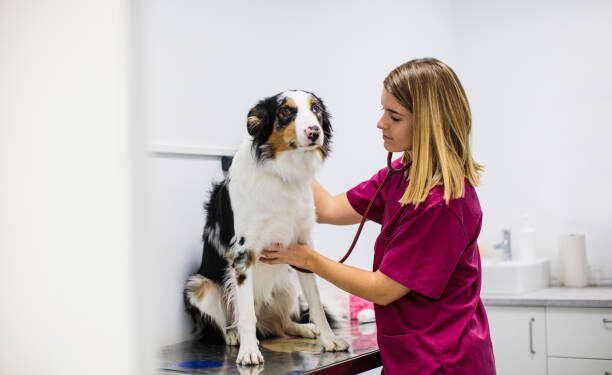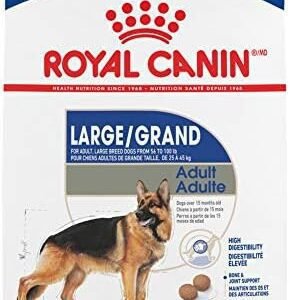I. Introduction
In the realm of canine healthcare, Difloxacin is a medication that holds significant importance. This article will delve into the world of Difloxacin for dogs, shedding light on its benefits, appropriate dosage, potential side effects, and much more. It serves as an essential resource for veterinarians and pet owners seeking detailed information about this medication.

Table: Essential Drug Information
| Common Names | Drug Type | Used For | Administered | FDA Approved |
|---|---|---|---|---|
| Difloxacin | Antibiotic | Infections | Tablets, Oral Liquid | Yes |
Difloxacin is an antibiotic that plays a pivotal role in the treatment of various infections in dogs. Understanding this medication is crucial for ensuring the well-being of your furry companion.
Table of Contents
Importance of Consulting a Veterinarian
Before delving into the specifics of Difloxacin, it’s vital to emphasize the importance of consulting a veterinarian. Only a qualified veterinary professional can provide accurate guidance on the use of this medication for your dog. Whether it’s a mild infection or a more severe health concern, the expertise of a veterinarian is irreplaceable.
Purpose of the Article
The primary purpose of this article is to provide dog owners with a comprehensive and accurate resource on Difloxacin. By the end of this read, you will have a clear understanding of when and how Difloxacin can benefit your dog, the appropriate dosages, potential side effects to watch for, and the importance of consulting with your veterinarian throughout the treatment process. Your dog’s health is of utmost importance, and this article aims to empower you with the knowledge needed to make informed decisions regarding their care.
II. Understanding Difloxacin
In this section, we will explore Difloxacin in-depth, aiming to provide a comprehensive understanding of this medication for dogs.
What is Difloxacin?
Difloxacin, a member of the fluoroquinolone class of antibiotics, is a vital component of veterinary medicine. It is a broad-spectrum antibiotic designed to combat bacterial infections in dogs. Its chemical structure and mechanism of action make it highly effective against a wide range of pathogenic bacteria.
Difloxacin works by inhibiting the DNA gyrase enzyme and topoisomerase IV, which are essential for bacterial DNA replication, transcription, and repair. By interfering with these processes, Difloxacin prevents the growth and proliferation of bacteria, ultimately leading to their death.
How Does Difloxacin Work in Dogs’ Bodies?
When a dog is administered Difloxacin, the medication is absorbed into the bloodstream and distributed throughout the body. It then travels to the site of infection, where it exerts its antimicrobial action.
Difloxacin targets various types of bacteria, including both Gram-positive and Gram-negative species. This makes it effective against infections in different organs and tissues. The antibiotic works by binding to specific proteins within bacteria, disrupting their normal cellular processes, and ultimately leading to bacterial death.
Common Conditions and Ailments in Dogs that Difloxacin Can Treat or Manage
Difloxacin is prescribed by veterinarians to address a variety of bacterial infections in dogs. Some of the common conditions and ailments that Difloxacin can effectively treat or manage include:
1. Skin Infections
Skin infections in dogs are often caused by bacteria, and Difloxacin can be prescribed to combat these infections. Whether it’s a superficial skin issue or a deeper tissue infection, Difloxacin’s broad-spectrum activity makes it a valuable treatment option.
2. Urinary Tract Infections
Urinary tract infections can be uncomfortable and painful for dogs. Difloxacin can be administered to address these infections, providing relief and helping to eliminate the causative bacteria.
3. Respiratory Infections
Dogs can suffer from various respiratory infections, including bronchitis and pneumonia. Difloxacin is effective in combating the bacteria responsible for these infections, promoting a faster recovery.
4. Gastrointestinal Infections
Gastrointestinal issues in dogs, such as enteritis and colitis, are often the result of bacterial overgrowth. Difloxacin can help normalize the bacterial flora in the digestive tract, aiding in recovery.
5. Prostate Infections
Infections of the prostate, while less common, can occur in male dogs. Difloxacin can be prescribed to treat these infections effectively.
6. Ear Infections
Ear infections, especially in breeds with floppy ears, are a frequent concern for dog owners. Difloxacin can be used to clear up ear infections caused by bacteria.
7. Eye Infections
Eye infections in dogs can be caused by various factors, including bacteria. Difloxacin eye drops are available and are used to treat these ocular infections.
It is essential to note that while Difloxacin is highly effective against bacterial infections, it is not effective against viral infections or non-bacterial causes of illness. Additionally, the use of Difloxacin should always be guided by a veterinarian who can accurately diagnose the infection and determine the most appropriate treatment.
Understanding Difloxacin’s mechanism of action and its effectiveness against various bacterial infections in dogs provides valuable insight into its role in canine healthcare. The next section will delve deeper into the benefits of using Difloxacin in specific health issues.
III. Benefits of Difloxacin for Dogs
In this section, we will explore the many benefits of Difloxacin for dogs, focusing on its effectiveness in treating specific canine health issues and how it can significantly improve the quality of life for our furry companions.
Effectiveness in Treating Specific Canine Health Issues
1. Rapid Resolution of Infections
One of the most significant benefits of Difloxacin is its ability to rapidly resolve bacterial infections in dogs. Whether it’s a skin infection, urinary tract infection, or a respiratory issue, Difloxacin’s broad-spectrum action ensures that it targets a wide range of pathogenic bacteria, leading to a quicker recovery.
2. Reduction of Pain and Discomfort
Bacterial infections in dogs can be painful and uncomfortable. Difloxacin not only combats the infection but also alleviates the distress associated with these conditions. This reduction in pain can lead to a much-improved quality of life for your canine companion.
3. Prevention of Complications
Untreated bacterial infections can lead to severe complications in dogs. Difloxacin plays a pivotal role in preventing these complications by effectively eradicating the causative bacteria. This is particularly important in cases of urinary tract infections and skin infections, which can become more severe if left untreated.
4. Versatility in Treatment
Difloxacin’s versatility makes it a valuable tool in the veterinarian’s arsenal. It can address a wide range of infections, including those affecting the skin, ears, eyes, and internal organs. This versatility simplifies the treatment process and reduces the need for multiple medications in cases of complex infections.
How Difloxacin Can Improve Dogs’ Quality of Life
1. Faster Recovery
Difloxacin’s rapid action can significantly expedite the recovery process for dogs suffering from bacterial infections. This means less time spent feeling unwell and more time enjoying a healthy and active life.
2. Enhanced Comfort
Bacterial infections are often associated with discomfort, pain, and itching. By resolving the underlying infection, Difloxacin provides dogs with relief from these distressing symptoms, allowing them to live comfortably.
3. Reduced Risk of Transmission
Certain bacterial infections, such as skin infections or urinary tract infections, can be transmitted to other dogs or even to humans. Using Difloxacin not only benefits the infected dog but also reduces the risk of spreading the infection to other pets or family members.
4. Improved Appetite and Activity Levels
When a dog is battling an infection, it can lead to a loss of appetite and decreased activity. Difloxacin’s ability to swiftly resolve infections often results in improved appetite and a return to normal activity levels.
5. Lower Veterinary Costs
Effective treatment with Difloxacin can help lower long-term veterinary costs. By preventing complications and reducing the need for additional treatments, Difloxacin provides a cost-effective solution for canine health issues.
It’s important to note that while Difloxacin offers numerous benefits, it should always be administered under the guidance of a veterinarian. A thorough examination and accurate diagnosis are crucial to ensure the mostappropriate treatment and dosage. Additionally, veterinarians can monitor the dog’s response to treatment and make any necessary adjustments.
Difloxacin is a powerful tool in the fight against bacterial infections in dogs, offering a path to rapid recovery, enhanced comfort, and an improved quality of life for our four-legged friends. Understanding these benefits underscores its significance in canine healthcare. The next section will provide detailed information on administering Difloxacin to dogs, including dosages and administration guidelines.
IV. Administering Difloxacin to Dogs
Proper administration of Difloxacin is essential to ensure its effectiveness and the well-being of your canine companion. In this section, we will provide detailed information on how to administer Difloxacin to dogs, including dosage guidelines, frequency of administration, directions for use, and the importance of adhering to prescribed dosages.
Dosage Guidelines: Determining the Right Dosage
The correct dosage of Difloxacin for your dog depends on several factors, including their size, the type and severity of the infection, and the specific product prescribed. Always follow your veterinarian’s prescribed dosage instructions as they will tailor the treatment to your dog’s individual needs.
Difloxacin is available in various formulations, including tablets and oral liquids. The dosage is typically expressed in milligrams (mg) and is administered per kilogram (kg) of your dog’s body weight. Here’s a general guideline:
Tablets: Difloxacin tablets are available in different strengths, such as 25 mg, 50 mg, or 100 mg. The dosage can range from 5 to 10 mg per kg of body weight, depending on the infection’s severity.
Oral Liquid: Difloxacin oral liquid may come in various concentrations (e.g., 5 mg/ml). The dosage is measured in milliliters per kilogram of body weight, usually ranging from 0.5 ml to 1 ml per kg.
It is crucial to consult with your veterinarian to determine the correct dosage for your dog’s specific condition. Never attempt to adjust the dosage without professional guidance, as underdosing can be ineffective, while overdosing can lead to adverse effects.
Frequency of Administration
Difloxacin is typically administered once daily, but the frequency may vary depending on the specific infection being treated. Your veterinarian will provide precise instructions on how often to administer the medication. It’s essential to follow this schedule diligently to maintain therapeutic levels of the drug in your dog’s system.
Directions for Use: Tips for Administering Difloxacin
Administering medication to dogs can be a challenge, but there are several strategies to make the process easier:
Use Treats: Some dogs readily accept medication when it’s concealed in a treat. Consult your veterinarian to ensure the medication can be safely hidden in a treat, and then follow their guidance on how to do so.
Mix with Food: For dogs who are not treat-oriented, you can mix Difloxacin with a small amount of wet food or a special treat like cheese or peanut butter. Ensure your dog consumes the entire portion to receive the full dose.
Oral Syringe: If your dog is particularly difficult to medicate, your veterinarian may provide an oral syringe for accurate administration. This method allows for precise dosing.
Pill Pockets: Pill pockets are designed to hide medication. You can place the tablet or capsule in the pill pocket, and most dogs will readily accept it.
Ask for a Flavored Formulation: Some veterinary pharmacies offer flavored formulations of Difloxacin, making it more appealing to dogs.
Importance of Adhering to Prescribed Dosages
Consistency in administering Difloxacin is crucial for its effectiveness. Deviating from the prescribed dosage can result in under-treatment, allowing the infection to persist, or overdosing, which can lead to potential side effects or antibiotic resistance.
It’s also important to complete the full course of treatment, even if your dog appears to be improving before the medication is finished. Stopping treatment prematurely may allow remaining bacteria to develop resistance to Difloxacin, making future infections harder to treat.
Missed Dose Guideline
If you miss a dose of Difloxacin, it’s important to follow these steps:
Administer the Missed Dose: If you remember shortly after the missed dose, give it to your dog as soon as possible.
Skip the Dose if It’s Almost Time for the Next One: If it’s closer to the time for the next scheduled dose, skip the missed one. Do not double the dose to make up for it.
Resume the Regular Schedule: Continue with the regular dosing schedule as prescribed by your veterinarian.
- Consult Your Veterinarian: If you miss multiple doses or are unsure about what to do, contact your veterinarian for guidance.
Remember that maintaining a consistent dosing schedule and adhering to your veterinarian’s instructions are essential for the safe and effective use of Difloxacin. If you have any questions or concerns about administering the medication, don’t hesitate to consult your veterinarian for guidance.
In the next section, we will delve into potential side effects and precautions associated with Difloxacin for dogs.
V. Potential Side Effects and Precautions
As with any medication, Difloxacin may have potential side effects and precautions that dog owners should be aware of. In this section, we will discuss common side effects of Difloxacin in dogs, how to identify severe or adverse reactions, precautions for pregnant or lactating dogs, and potential interactions with other medications or supplements.
Common Side Effects of Difloxacin in Dogs
Difloxacin is generally considered safe and well-tolerated in dogs, but like any medication, it can produce side effects in some individuals. Common side effects may include:
1. Gastrointestinal Upset
Mild gastrointestinal upset, such as nausea, vomiting, or diarrhea, can occur in some dogs. It’s essential to administer Difloxacin with food or as directed by your veterinarian to minimize the risk of stomach discomfort.
2. Lethargy
Some dogs may experience temporary lethargy or reduced activity while taking Difloxacin. This side effect is typically mild and short-lived, resolving as the treatment progresses.
3. Changes in Appetite
Your dog may exhibit changes in appetite, either increased or decreased, while on Difloxacin. Monitoring their food intake and discussing any significant changes with your veterinarian is advisable.
4. Allergic Reactions
In rare cases, dogs may exhibit signs of an allergic reaction to Difloxacin, such as hives, swelling of the face or limbs, difficulty breathing, or severe itching. If you notice any of these symptoms, discontinue the medication and seek immediate veterinary assistance.
Identifying Severe or Adverse Reactions
While severe adverse reactions to Difloxacin are relatively rare, it’s essential to be vigilant and seek prompt veterinary care if you observe any of the following signs:
1. Neurological Symptoms
Seizures, disorientation, tremors, or any sudden changes in behavior could indicate a severe adverse reaction to Difloxacin. These symptoms require immediate attention from a veterinarian.
2. Allergic Reactions
As mentioned earlier, any signs of a severe allergic reaction, such as swelling, difficulty breathing, or anaphylaxis, are considered medical emergencies. Seek immediate veterinary care.
3. Persistent Gastrointestinal Distress
While mild gastrointestinal upset is a common side effect, persistent or severe vomiting, diarrhea, or blood in the stool should be reported to your veterinarian.
4. Joint Pain or Lameness
In rare cases, Difloxacin may cause joint pain or lameness. If your dog experiences these symptoms, consult your veterinarian.
Precautions for Pregnant or Lactating Dogs
Pregnant and lactating dogs require special considerations when it comes to medication. Difloxacin is generally not recommended for use in pregnant dogs, particularly during the first and last trimesters of pregnancy. It may be prescribed if the benefits outweigh the potential risks, but this should be a decision made in consultation with your veterinarian.
For lactating dogs, Difloxacin can pass into the mother’s milk and potentially affect nursing puppies. It’s essential to inform your veterinarian if your dog is nursing, as they may recommend alternative treatments or strategies to mitigate potential risks.
Interactions with Other Medications or Supplements
Difloxacin may interact with other medications or supplements your dog is taking. It’s crucial to provide a comprehensive list of your dog’s current medications and supplements to your veterinarian before starting Difloxacin.
NSAIDs (Nonsteroidal Anti-Inflammatory Drugs): Concurrent use of Difloxacin and NSAIDs can increase the risk of gastrointestinal upset. Your veterinarian will advise on proper dosing and potential alternatives.
Probiotics: If your dog is on a probiotic supplement, inform your veterinarian. Some probiotics may interfere with the absorption of antibiotics like Difloxacin.
Corticosteroids: Combining Difloxacin with corticosteroids can increase the risk of tendon injury. Discuss the potential risks with your veterinarian.
- Other Antibiotics: Taking multiple antibiotics simultaneously can lead to antibiotic resistance. Your veterinarian will make appropriate choices to avoid this issue.
Remember that your veterinarian is the best source of information regarding potential interactions and precautions specific to your dog’s health and medication regimen. Always follow their guidance to ensure the safe and effective use of Difloxacin.
In the next section, we will highlight the importance of consultation with a veterinarian when considering Difloxacin for your dog and provide information on what to do in case of missed doses.
VI. Consultation with a Veterinarian
When it comes to your dog’s health and medication, consultation with a veterinarian is paramount. In this section, we will emphasize the importance of professional guidance when considering Difloxacin for your dog. We’ll also provide information on overdose, possible toxicity, signs or symptoms that indicate it’s time to call the vet, and how to discuss Difloxacin with your veterinarian, including seeking a second opinion if needed.
Emphasizing the Importance of Professional Guidance
Before starting any medication, it’s crucial to consult with a qualified veterinarian who can assess your dog’s specific health needs. Difloxacin, like any medication, should only be administered under the guidance and prescription of a veterinarian. Here are some key reasons why professional guidance is essential:
Proper Diagnosis: Veterinarians can accurately diagnose your dog’s condition and determine whether Difloxacin is the appropriate treatment.
Dosage and Duration: They can prescribe the correct dosage and duration of Difloxacin tailored to your dog’s size, age, and health status.
Risk Assessment: Veterinarians can evaluate potential risks, such as interactions with other medications, allergies, or underlying health conditions.
Monitoring: They can provide guidance on monitoring your dog’s response to the medication and adjusting the treatment plan as needed.
Preventing Antibiotic Resistance: Veterinarians play a crucial role in preventing antibiotic resistance by ensuring that antibiotics are used judiciously.
Overdose Information and Possible Toxicity/Effect
While Difloxacin is generally safe when administered correctly, it’s essential to be aware of the risks associated with overdose. An overdose of Difloxacin can have adverse effects on your dog’s health. Common signs of overdose may include:
Vomiting: Frequent and severe vomiting is a common sign of overdose.
Diarrhea: Diarrhea may become profuse and persistent.
Neurological Symptoms: In severe cases, dogs may exhibit neurological symptoms such as seizures, disorientation, or tremors.
- Tendon Injury: Overdose can increase the risk of tendon injury, which may manifest as lameness or joint pain.
If you suspect that your dog has ingested an excessive amount of Difloxacin, contact your veterinarian or an emergency veterinary clinic immediately. Be prepared to provide information on the amount ingested, the time of ingestion, and your dog’s symptoms.
Signs or Symptoms: When to Call the Vet
Even when following the prescribed dosage, it’s important to be vigilant and aware of any unusual signs or symptoms that your dog may exhibit while taking Difloxacin. Some signs that warrant a call to your veterinarian include:
Severe Vomiting or Diarrhea: If your dog experiences persistent or severe gastrointestinal upset, it’s essential to consult your veterinarian.
Allergic Reactions: Any signs of an allergic reaction, such as swelling, difficulty breathing, or hives, require immediate medical attention.
Neurological Symptoms: Sudden changes in behavior, seizures, disorientation, or tremors should be addressed promptly.
Tendon Pain or Lameness: If your dog displays signs of joint pain or lameness, contact your veterinarian.
Loss of Appetite: A significant and prolonged loss of appetite may be a cause for concern.
How to Discuss Difloxacin with Your Veterinarian
Effective communication with your veterinarian is crucial for your dog’s well-being. When discussing Difloxacin, consider the following tips:
Provide a Complete Medical History: Share your dog’s complete medical history, including current medications, allergies, and pre-existing health conditions.
Ask Questions: Don’t hesitate to ask your veterinarian questions about Difloxacin, including potential side effects, interactions, and the expected outcome of the treatment.
Follow Instructions: Adhere to your veterinarian’s instructions and the prescribed dosage regimen carefully.
Keep a Medication Journal: Record the administration of Difloxacin, noting the date, time, and any observed changes in your dog’s condition. This information can be valuable for your veterinarian.
Report Side Effects: If your dog experiences any side effects, inform your veterinarian promptly.
Seeking a Second Opinion if Needed
In some cases, seeking a second opinion from another qualified veterinarian can provide additional clarity and assurance regarding your dog’s treatment plan. Here are situations in which seeking a second opinion may be warranted:
Complex Medical Conditions: If your dog has a complex or rare medical condition, consulting with a specialist or another experienced veterinarian can offer a fresh perspective.
Unresolved Issues: If your dog’s condition does not improve or worsens despite treatment, a second opinion can help identify alternative approaches.
Concerns About Medication: If you have concerns about the prescribed medication, its potential side effects, or its impact on your dog’s health, seeking a second opinion can provide peace of mind.
When seeking a second opinion, be transparent with both veterinarians about your intentions and share your dog’s complete medical history and treatment records for an accurate assessment.
In the next section, we will compare Difloxacin with similar drugs in its category, discussing their efficacy, when one might be chosen over the other, and the cost considerations. This information can help you make informed decisions about your dog’s treatment.
VII. Comparison with Similar Drugs in This Category
When it comes to treating bacterial infections in dogs, Difloxacin is one of several options available. In this section, we will compare the efficacy of Difloxacin with other drugs in the same category, discuss the circumstances under which one alternative might be chosen over another, and consider the cost implications.
Comparing Efficacy of Drugs
1. Difloxacin (Difloxacin Hydrochloride)
- Efficacy: Difloxacin is a fluoroquinolone antibiotic known for its broad-spectrum activity against a wide range of bacteria. It is particularly effective against Gram-negative bacteria.
2. Enrofloxacin (Baytril)
- Efficacy: Enrofloxacin is another fluoroquinolone antibiotic and is closely related to Difloxacin. It exhibits similar broad-spectrum activity and is effective against various bacterial infections.
3. Ciprofloxacin (Cipro)
- Efficacy: Ciprofloxacin is a human fluoroquinolone antibiotic that is occasionally used in veterinary medicine. It is effective against many Gram-negative and some Gram-positive bacteria.
4. Amoxicillin-Clavulanate (Clavamox)
- Efficacy: Amoxicillin-clavulanate is a combination antibiotic often prescribed for a broader spectrum of bacterial infections, including some Gram-positive and Gram-negative bacteria.
5. Cephalexin (Keflex)
- Efficacy: Cephalexin is a cephalosporin antibiotic that is effective against a variety of Gram-positive bacteria. It is less effective against Gram-negative bacteria.
The choice of antibiotic depends on the specific bacteria causing the infection, their susceptibility to the drug, and the overall health of the dog.
When to Choose an Alternative
The decision to choose an alternative to Difloxacin depends on several factors:
Bacterial Susceptibility: If the bacteria causing the infection are known to be resistant to Difloxacin, another antibiotic may be preferred.
Safety and Tolerance: In some cases, dogs may have adverse reactions to certain antibiotics. If a dog has a history of adverse reactions to Difloxacin, an alternative antibiotic with a different chemical structure may be chosen.
Type of Infection: The choice of antibiotic also depends on the type and location of the infection. Some antibiotics are better suited for specific types of infections.
Underlying Health Conditions: If a dog has underlying health conditions, such as kidney or liver disease, the choice of antibiotic must consider these factors.
Cost: Cost can also be a consideration for some pet owners. Some antibiotics are more cost-effective than others.
Comparing the Cost of the Drug
The cost of antibiotics can vary widely, and it’s important to consider your budget when choosing a treatment option. Here’s a general cost comparison for the mentioned antibiotics:
Difloxacin: The cost of Difloxacin may vary depending on the brand and the specific formulation (tablets, oral liquid, etc.). On average, it falls into the mid-range of antibiotic costs.
Enrofloxacin (Baytril): Enrofloxacin is often priced similarly to Difloxacin.
Ciprofloxacin (Cipro): Ciprofloxacin, being a human medication, can be more expensive when prescribed for dogs.
Amoxicillin-Clavulanate (Clavamox): This combination antibiotic is often more affordable than fluoroquinolones.
Cephalexin (Keflex): Cephalexin is usually one of the most cost-effective antibiotics.
It’s important to note that the actual cost can vary depending on the dosage and duration of treatment, as well as any additional veterinary fees.
Ultimately, the choice of antibiotic should be made in consultation with your veterinarian, taking into account your dog’s specific health needs and the nature of the infection. Your veterinarian will consider all relevant factors to determine the most suitable treatment option.
In the next section, we will address frequently asked questions (FAQs) about Difloxacin for dogs. This will provide concise answers to common queries that dog owners may have regarding this medication.
VIII. Frequently Asked Questions (FAQs)
In this section, we’ll address some of the most commonly asked questions that dog owners have about Difloxacin. We understand that pet owners may have concerns and uncertainties when it comes to their dog’s health, so we aim to provide clear and concise answers to alleviate those concerns.
1. What is Difloxacin, and how does it work in dogs?
Difloxacin is a fluoroquinolone antibiotic used to treat bacterial infections in dogs. It works by inhibiting the growth and reproduction of bacteria. Difloxacin interferes with the DNA replication process in bacteria, ultimately leading to their death. It is effective against a wide range of both Gram-negative and some Gram-positive bacteria.
2. What are the common conditions that Difloxacin can treat in dogs?
Difloxacin is commonly used to treat bacterial infections in dogs, including but not limited to:
- Skin and soft tissue infections
- Urinary tract infections
- Respiratory tract infections
- Otitis (ear infections)
- Gastrointestinal infections
- Wound infections
Your veterinarian will determine the appropriateness of Difloxacin for your dog’s specific condition.
3. Is Difloxacin safe for dogs?
When used as directed by a veterinarian, Difloxacin is generally safe for dogs. However, it’s crucial to follow the prescribed dosage and administration guidelines. Some dogs may be more sensitive to antibiotics, so any adverse reactions should be reported to your vet immediately.
4. Are there any potential side effects of Difloxacin in dogs?
Yes, like any medication, Difloxacin can have side effects. Common side effects include:
- Upset stomach
- Vomiting
- Diarrhea
- Loss of appetite
If you notice any severe or unusual side effects, contact your veterinarian promptly.
5. Can pregnant or lactating dogs take Difloxacin?
Difloxacin is generally not recommended for pregnant or lactating dogs because it can affect developing puppies. It’s essential to inform your veterinarian if your dog is pregnant or nursing, as they will consideralternative treatment options.
6. Can Difloxacin interact with other medications or supplements?
Yes, Difloxacin can interact with other medications or supplements your dog may be taking. Inform your veterinarian about all the medications and supplements your dog is on to avoid potential interactions. This includes over-the-counter medications, herbal remedies, and supplements.
7. How should I administer Difloxacin to my dog?
Difloxacin is available in various forms, including tablets and oral liquid. Follow your veterinarian’s instructions on dosage and administration. You may need to give the medication with food to reduce the risk of an upset stomach. Always complete the full course of antibiotics, even if your dog’s symptoms improve before it’s finished.
8. What should I do if I miss a dose of Difloxacin?
If you miss a dose, give it as soon as you remember. However, if it’s close to the time for the next scheduled dose, skip the missed one. Do not double up on doses. Contact your veterinarian if you’re uncertain about what to do.
9. How long does it typically take for Difloxacin to start working?
The time it takes for Difloxacin to show effectiveness can vary depending on the type and severity of the infection. In many cases, you may notice an improvement in your dog’s condition within a few days of starting the medication. However, it’s essential to complete the full prescribed course to ensure the infection is completely eradicated.
10. Can I purchase Difloxacin without a prescription?
No, Difloxacin is a prescription medication, and it should only be used under the guidance of a veterinarian. This is to ensure that the medication is appropriately prescribed based on your dog’s specific condition and to monitor for any potential side effects or adverse reactions.
Please note that these answers are for informational purposes and do not replace professional veterinary advice. If you have specific concerns or questions about Difloxacin and your dog, consult your veterinarian. In the next part, we will provide a brief summary of the key points discussed throughout this article on Difloxacin for dogs.
























